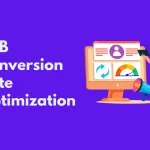Remember the days of exchanging paper business cards? Those little rectangles of cardstock are becoming a thing of the past. Now, it’s all about digital business cards. They’re not just trendy; they’re practical and eco-friendly too. This article will walk you through the ins and outs of digital business cards, from understanding their benefits to creating your own. Whether you’re a seasoned professional or just starting out, you’ll find valuable insights on how to make your mark in the digital networking world.
What Are Digital Business Cards?
Digital business cards, also known as electronic or virtual business cards, are the modern take on traditional paper cards. They contain all the same information – your name, job title, contact details, and company info – but in a digital format. These cards can be shared via email, text messages, QR codes, or specialized apps.
The beauty of digital cards lies in their versatility. Unlike their paper counterparts, they can include clickable links to your website, social media profiles, or portfolio. Some even allow you to embed videos or interactive elements. It’s like having a mini-website dedicated to your professional identity.

Why Switch to Digital Business Cards?
Digital business cards offer several advantages over traditional paper cards. Let’s explore some key benefits that make them an attractive choice for modern professionals.
Cost-Effective and Eco-Friendly
Printing paper cards can be expensive, especially if you order in small batches or need frequent updates. Digital cards eliminate these costs. Plus, they’re kinder to the environment. No more boxes of outdated cards gathering dust in your office drawer.
Easy Updates and Sharing
Changed your phone number? Got a promotion? With digital cards, you can update your information in seconds. No need to order a new batch of cards. Sharing is just as easy. A quick tap on your phone or a scan of a QR code, and your contact info is in someone’s digital address book.
Enhanced Networking Opportunities
Digital cards open up new ways to connect. Many platforms allow you to see when someone views your electronic business card or clicks on your links. This feature can help you follow up with potential clients or collaborators at the right time.
Creating Your Digital Business Card
Now that you know why digital cards are great, let’s dive into how to make one.
Choose Your Platform
There are many platforms out there for creating digital business cards.
Each digital business card app has its own features and pricing plans. Some offer free basic versions, while others require a subscription for advanced features. Take some time to explore different options and find the one that best fits your needs and budget.
Design Your Card
Once you’ve chosen a platform, it’s time to design your card. Here are some key elements to consider:
Visual Appeal: Choose a business card design that reflects your personal brand. Many platforms offer customizable templates to get you started.
Essential Information: Include your name, job title, company, phone number, email, and website. Make sure this information is easy to read and prominently displayed.
Social Media Links: Add links to your professional social media profiles, like LinkedIn or Twitter.
Call-to-Action: Include a clear call-to-action, like ‘Book a Meeting’ or ‘View Portfolio.’
Photo: A professional headshot can make your card more personable and memorable.
Remember, less is often more. Don’t overcrowd your card with information. Keep it clean and focused on the most important details.
Optimize for Mobile
Most people will view your digital card on their smartphones. Make sure your design looks good on small screens. Test it on different devices to ensure all elements are visible and clickable.
Add Interactive Elements
This is where digital cards really shine. Consider adding:
Video introductions
Audio messages
Calendar integration for easy scheduling
Digital product catalogs
Customer testimonials
These interactive elements can help you stand out and provide more value to your contacts.
Sharing Your Digital Business Card
Creating your card is just the first step. The real magic happens when you start sharing it. Here are some effective ways to distribute your digital business card:
QR Codes
QR codes are a quick and easy way to share your digital card in person. You can print the QR code on traditional paper cards, add it to your email signature, or display it at events. When someone scans the code with their smartphone, they’ll instantly have access to your digital card.
Email Signatures
Add a link to your digital card in your email signature. This way, every email you send becomes an opportunity to share your contact information.
Social Media Profiles
Many social media platforms allow you to add a link to your bio. Use this space to share your digital business card. It’s an excellent way to make your profile more professional and provide easy access to your contact information.
NFC Technology
Some digital business card platforms offer NFC (Near Field Communication) capabilities. This allows you to share your card by simply tapping your phone against another NFC-enabled device. It’s like a digital handshake!
Direct Messaging
Most digital card platforms allow you to share your card via text message, WhatsApp, or other messaging apps. This is handy for quick exchanges or when you’re connecting with someone remotely.
Making the Most of Your Digital Business Card
A digital business card is more than just a way to share your contact info. It’s a powerful networking tool. Here’s how to leverage it effectively:
Keep Your Information Updated
One of the biggest advantages of digital cards is how easy they are to update. Make sure you’re taking advantage of this feature. Set a reminder to review your card information regularly, especially after major career changes or when you launch new projects.
Track Engagement
Many digital card platforms offer analytics. You can see how many times your card has been viewed, which links are clicked most often, and sometimes even who has viewed your card. Use this data to refine your card and follow up with interested contacts.
Personalize for Different Audiences
Some platforms allow you to create multiple versions of your card. Take advantage of this feature to tailor your information for different audiences. For example, you might have one version for potential clients, another for job seekers, and a third for industry peers.
Integrate with Your CRM
If you use a Customer Relationship Management (CRM) system, look for a digital card platform that integrates with it. This can streamline your networking process by automatically adding new contacts to your CRM.
Use It as a Mini-Portfolio
Your digital card can be more than just contact information. Use it to showcase your best work. Include links to projects you’re proud of, or embed a short video highlighting your skills.
Overcoming Common Challenges
While digital business cards offer many advantages, they can come with some challenges. Here’s how to address common issues:
Tech-Resistant Contacts
Not everyone is comfortable with digital technology. For these contacts, consider having a simple paper card with your basic info and a QR code. This way, they can choose how they want to save your information.
‘Zoom Fatigue’
With so much of our networking happening online, some people may feel overwhelmed by yet another digital tool. Make your card stand out by keeping it simple and focusing on the most valuable information.
Privacy Concerns
Some people might be hesitant to scan QR codes or click on links from new contacts. Be transparent about what information you’re sharing and how it will be used. Choose a reputable digital card platform with strong privacy policies.
Connectivity Issues
Not every networking situation will have reliable internet access. Make sure your digital card can be shared offline or have a backup plan for low-connectivity situations.
The Future of Digital Business Cards
As technology evolves, so will digital business cards. Here are some trends to watch:
Augmented Reality (AR)
Imagine pointing your phone at someone and seeing their digital card pop up in AR. This technology is already in development and could revolutionize how we network at events.
Artificial Intelligence Integration
AI could make digital cards even smarter. For example, your card could automatically update your job title across all platforms when you get a promotion, or suggest the best time to follow up with a new contact based on their viewing patterns.
Blockchain for Verification
Blockchain technology could be used to verify the authenticity of digital cards, adding an extra layer of trust to digital networking.
Enhanced Interactivity
Future digital cards might include more interactive elements, like mini-games or quizzes, to make networking more engaging and memorable.
Wrapping Up
Digital business cards are more than just a tech-savvy alternative to paper cards. They’re a powerful tool for building and maintaining professional relationships in our increasingly digital world. By creating a well-designed card, sharing it effectively, and using it strategically, you can enhance your networking efforts and stand out in your field. As technology continues to evolve, digital cards will likely become even more sophisticated and integral to professional networking. So why wait? Start creating your digital business card today and step into the future of networking.








Leave a Reply